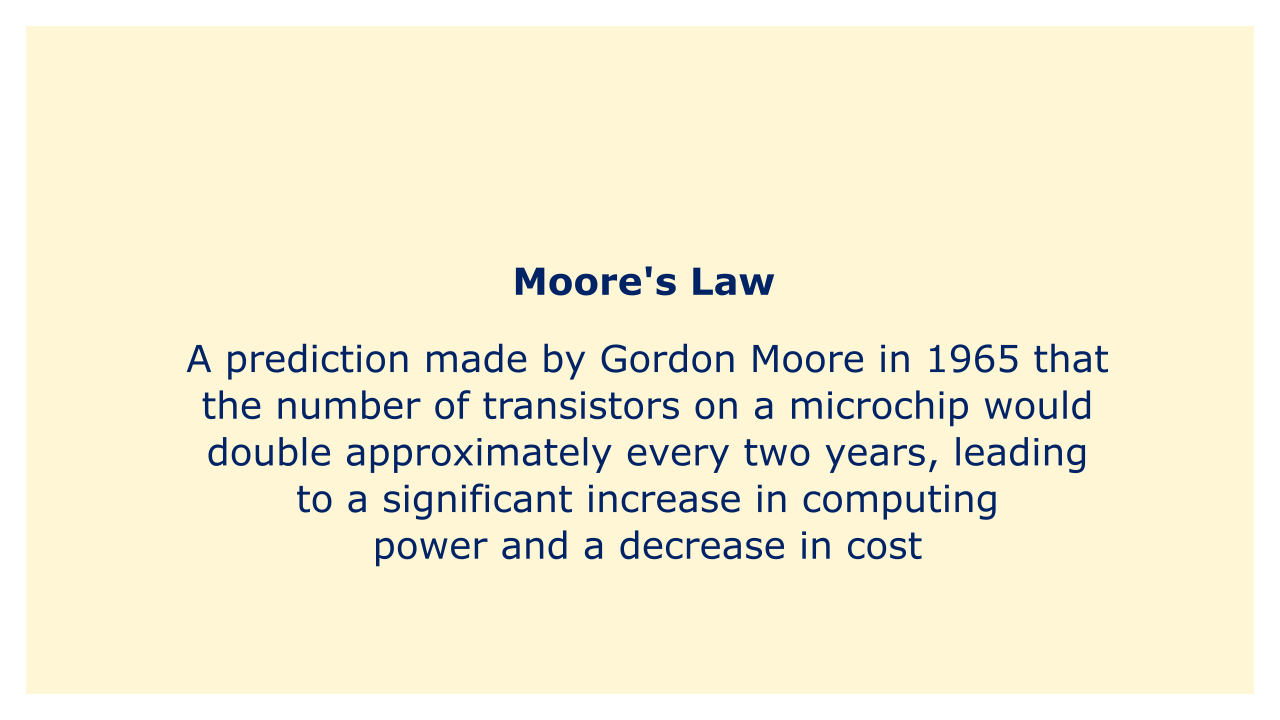 |
| Image: Moneybestpal.com |
Gordon Moore, a co-founder of Intel Corporation, predicted in 1965 that the number of transistors on a microchip would roughly double every two years, resulting in a considerable gain in computer capability and a decrease in cost. This prediction is known as Moore's Law.
Moore's Law has been a guiding principle for the quick advancement of modern technology for more than 50 years. A microchip's size, speed, and power grow as the number of transistors on the chip rises, opening up new applications and capabilities that weren't previously conceivable.
Moore's Law has had a profound impact on the financial industry. Microchips' growing computational capacity and falling prices have made it possible to create more complex financial models and algorithms and handle bigger and more intricate data sets. New risk management tools and methods have also been created as a result, along with new financial services and products including high-frequency trading and algorithmic trading.
Moore's Law has also helped the expansion of the internet and the emergence of online financial services since increased processing power has made it possible to securely and swiftly process huge amounts of data. This has made it possible for the creation of global-accessible financial services like digital wallets and online trading platforms.
Despite all of Moore's Law's advantages, some scientists are concerned about how long it will last. It may become more challenging and expensive to continue to grow processing power at the same rate when the number of transistors on a microchip approaches its physical limits. The future of banking and other sectors that largely rely on technology may be affected by this, which could slow down the rate of technological advancement.
